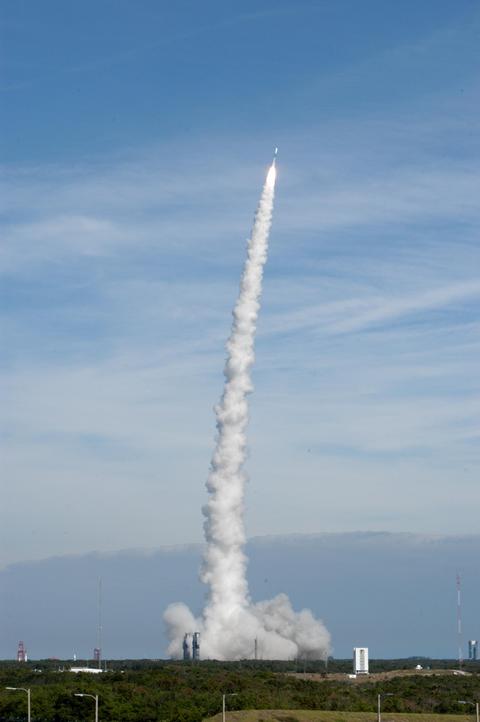
Credit: NASA
Explanation: Where do gamma ray bursts occur? To help find out, NASA launched the Swift satellite on Saturday, as pictured above. What Swift is designed to do better than any previous satellite is to quickly locate these enigmatic explosions in both sky position and distance. Once a gamma ray burst (GRB) is located, Swift itself will rotate to face it head-on and determine its distance directly. Swift locations will be immediately beamed down to Earth-based telescopes operating around the world and across the electromagnetic spectrum that are just waiting for a place on the sky to point. Subsequently collected GRB and afterglow information will help astronomers not only determine the nature of the initial explosions, but also the nature of the expanding shockwaves. Some Swift-located GRBs could turn out to be the most distant transient events ever detected, holding unique clues to the nature and rate of the very first wave of star formation in the early universe.